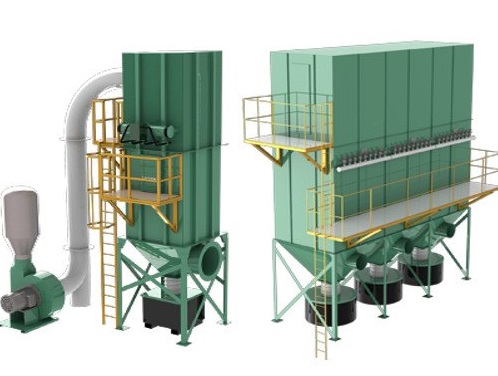Since the Clean Air Act in the 1970s, the utilization of fabric filter baghouses for both process and nuisance dust collection has experienced a 16% compound growth rate worldwide. Growth rates have leveled in the U.S., but maintained themselves in emerging countries. Government and social mandates have brought requirements for larger and more sophisticated baghouse cleaning designs, and more advanced fabric filter bag designs and filter media for use in baghouse filtration.
Common Names for Dry Fabric Filter Bags
Since there are so many different industries that utilize dust collection, filter bags adopt many different names. Sometimes what a filter is referred to can be dependent on the application it is used for or the material it is made out of. The following are a list of names; some you may have heard of and others you may not have. Getting to know this list can instantly help when trying to troubleshoot a dust collector with a co-worker or service provider.
- Reverse Air Bags
- Filter Bags
- Filter Socks
- Filter Media Bags
- Tubular Bags
- Dust Bags
- Felted Bags
- Woven Bags
- Fiberglass Bags
- Envelop Bags
- Cartridges
- Pleated Elements
- Fabric Filter Bags
- APC Filter Bags
- Baghouse Filter Bags
- Pulse-Jet Bags
- Shaker Bags
Dry fabric filters, more commonly known as baghouse filters, are used to remove dust from the air by capturing air borne dust(s) suspended in the air. The air is directed using either vacuum suction or pressure into a series of ducts, which run horizontally and vertically from pick-up points at single and multiple plant process and nuisance dusting areas. The dust-laden air is sucked into a main gathering duct trunk line terminating at the air inlet of a baghouse fabric filter.
The baghouse itself is a large housing sometimes designed with multiple chambers. Dust collectors are designed to capture the dust and thus filter the air from particulate laden (dirty air) turning the dirty air into clean air; virtually particle free. Once the air is cleaned, it’s exhausted from the collector’s clean air side back into the atmosphere. Dirty solid particles are captured on the filter bags surface, while the gases being filtered pass through the filter bags media. This bag media is called “filter media” and will be discussed later.
Baghouses can automatically clean the filtered particles off of the filter media based on a periodic need to clean the filter bags media. This is called regenerating the filter bag medias permeability, which removes enough compacted dust cake to allow air to flow again at a low (<6” W.G. static loss) restriction (static loss) across the filter media. The system depends on a Fan or Blower to either pressure (push) or vacuum (suck) the air across the filter bags’ media. This means the filter bags media has a dirty side and a clean side. The dirty side intercepts, filters, and compacts the dirty air stream gases, while the clean side has contact with clean air stream gas as it passes through the media.
Characteristics of Filtration Fibers
- Acrylic Fibers
- Aromatic Polyamide (Nomex)
- Polyester (PE)
- Polypropylene (PP)
- P84 (Polyimide)
- Teflon
- Glass
- Ryton (Polyphenylene Sulfide)
As a baghouse OEM, one of the most important Baghouse Equipment design criteria considerations is the proper selection of both the bag’s filter media and the bag’s size / tailoring. To select a proper bag filter media as a baghouse OEM and as baghouse owner in the market to purchase bag replacements, you need to determine the following information:
- Compare baghouse application / process to filter media application selection chart by temperature and chemical resistance.
- Evaluate previous job dust handling experience to select suitable internal can and interstitial velocity ranges.
- Once internal velocities ranges are agreed upon, then final air to cloth ratio and filter bag length can be calculated.
- Filtration efficiency selection in terms of outlet dust emission requirements to meet air permit is revisited based on actual internal velocities, air to cloth ratio, and bag length. This final analysis and review is used to determine if special media surface treatments or PTFE membrane is required to insure success in meeting filtration efficiency and maintaining a DP range of between 2.5” WC to 4.5” WC.
- Determine special application design requirements for ground wire, bottom wear guards, and special sewing / needle hole close-offs. At this point in your developing final filter bag selection and specifications you will have determined the following bag design criteria:
- Next, here are some helpful tips to ensure you receive the filter bag you have specified and have placed on order
There you have it. You are now on your way to becoming a expert in baghouse filter bags. If you’d like to expand your knowledge even further we can send one of our engineers to your facility to conduct a workshop custom fit for your equipment and staff.
We at KERONE have a team of experts to help you with your need for baghouse filter bags in various products range from our wide experience.

